Dairy Free Alternatives That Work For a Traditional Diet

I have to begin this post by stating that we love dairy. I mean, we really love it.
Our desire to take dairy out of our diets has been for one reason only– while doing the GAPS diet for two months, we noticed that each time we tried to add dairy back in, several members of the family had trouble with it. We are hopeful that continued healing of their guts will remedy that problem and allow us to return to our beloved raw milk, raw cheese, etc.
In the meantime, though, we’ve had to get creative. I definitely find it hard some days. There are times when the urge to consume some gooey, melted cheese or some raw milk on my granola threaten to overtake my self-control.
But I digress… we’re talking about dairy alternatives today! And yes, there are many!
Here are a few that our family has enjoyed lately:
Coconut Milk
There are many alternative “milks” out there. For a whole host of reasons, we choose to avoid those made with soy (read up more on soy here) or grains (like rice milk). We also avoid the store-bought nut milks, like almond or hazelnut milk, primarily because the nuts are not soaked and they may contain other ingredients that aren’t really necessary.
I do occasionally make homemade almond milk from soaked almonds, but truthfully, it just isn’t my favorite. I don’t find it especially creamy or rich, and it just changes the taste of things too much for me.
Coconut milk also has a different taste, but for some reason its mild sweetness is really pleasing to me.
The usual way that I make our “coconut milk” is simply by diluting a can of Thai Kitchen Organic Coconut Milk with filtered water in a 1:1 ratio. I mix it well with a whisk (or if I’m being lazy, by putting a lid on the jar and shaking it well). Another great option is to make a Coconut Milk Tonic, using coconut water instead of plain water.
I’ve also just recently purchased some dried coconut milk from Wilderness Family Naturals, to have another option. I’m still researching the effect of the drying on the fats in the coconut milk powder. I do like that it makes wonderfully smooth coconut milk. I also love having the option of just using as much powder as I need in a recipe, if I don’t want to open a whole can of coconut milk. It’s important to mention that this milk powder does have a trace amount of casein in it, so for those with true dairy allergies, it won’t be a good option. So far, we have noticed any negative effects from using it, but we aren’t dealing with an actual allergy.
We don’t really use our coconut milk for drinking, but more to replace milk in smoothies and in recipes. I tried it the other day in Spud Special Soup and also in Garden Chowder, and they both turned out amazing! It’s also perfect for baked goods.
Hemp Milk
This is something that we gave a whirl last spring/summer when my husband was on a dairy-restrictive diet. I liked the option of hemp because it is a seed, not a grain (and goodness knows we all eat enough grains and don’t need to start drinking them as well!). It is really packed with nutrients including good fats and protein.
I have purchased pre-made hemp milk from Manitoba Harvest in tetra packs. The convenience was great and the taste and texture were nice, too. It’s definitely a bit pricey, and even though I bought it by the case it wasn’t that much cheaper than my crazy expensive raw milk!
A much more frugal option is to just buy the seeds yourself (and the larger the amount, the better the price, of course).
I just soak them overnight, using 2 Tbsp of seeds per 1 cup of milk (so about 8 Tbsp per litre/quart, depending how thick you want it). In the morning I just blend it up for a minute or two. If you’d like it to be a bit sweeter, you can add a touch of honey and a teaspoon of vanilla, and maybe just a pinch of sea salt.
This was also nice over homemade granola, in smoothies, and even in cooking like soups or for making white sauces (though I prefer coconut milk better for this purpose).
Coconut Milk Kefir
You can see a video of how I make my coconut milk kefir in this post. Our favorite way to use the thinner, diluted kefir is in our morning fruit smoothies (it’s incredible with frozen strawberries, bananas and honey) and also poured over our homemade soaked granola.
The thicker kefir (undiluted) is just lovely used as a cream with fresh fruit, or like a dollop of sour cream on Mexican food. It also works nicely in place of yogurt, and is delicious with frozen berries, almonds and a bit of honey.
Cashew Cream
Speaking of whipped cream, cashew cream is another yummy alternative. My husband and daughter didn’t like it as much as my son and I did, so it may not appeal to everyone, but I thought it was quite delicious if you enjoy cashews.
I thought that Kimi at The Nourishing Gourmet had a recipe for a sweet cashew cream, but it turns out hers is for Garlicky Cashew Sour Cream. But, you could take that basic recipe and method, and instead of the lemon, garlic and cucumbers, you could add a bit of sweetener like raw honey or Sucanat and some vanilla, and voila. Sweet Cashew Whipped Cream!
Just make sure that when you’re using nuts to soak them overnight first. This breaks down the enzyme inhibitors in nuts, making them easier on the digestive system and making their nutrients much more readily absorbable.
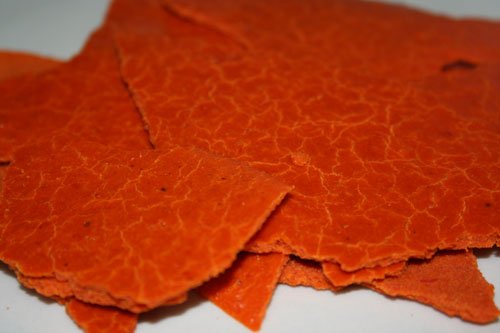
Cheese Crackers
This one Cheese-It Cracker recipe has made being dairy-free tolerable. I know, a dramatic statement, but it may almost be true. It has a strong flavor, that honestly tastes almost fake (like cheesy Doritos), except it doesn’t really taste fake. It’s hard to describe, but they are truly tasty.
A few examples of the ways that we eat these babies:
- Crumbled in our taco salad.
- Crumbled and sprinkled on top of soups, like Tomato or Garden Chowder.
- On top of “pizzas”, like our Zucchini Pizzas, or even a slice of gluten-free bread slathered in pizza sauce. Nope, they don’t melt in the toaster oven, but they taste good warm, browned and slightly crispy.
- Crumbled (yes, note the theme here) in sandwich wraps or soft tacos.
- Simply as a cracker.
I don’t bother to score mine and make them into nice cracker shapes. I simply break them apart after. You could score them when they’re partially dehydrated so that they break apart into perfect cracker shapes instead.
Cheese Sauce
This sauce is basically the above cheese cracker recipe, but before it’s dehydrated. I like to mix this with rice pasta for “mac & cheese”. You could also use it in place of a cheesy white sauce in any casserole type recipe. It’s so simple to whip up in the dehydrator, so it is a handy recipes for quick meals.
Another great way to make a “cheese” sauce is to use the sauce from the Dijon Scalloped Potatoes below. It’s not exactly cheesy, but it will substitute fairly well. You can omit the onions if you want it to pour over veggies, like cauliflower or broccoli. Adding some brewer’s yeast flakes to the sauce will enhance the cheese flavor, as will a bit of extra salt.
Dijon Scalloped Potatoes
I fell in love with this recipe when we were first married. It’s from a vegan cookbook, How It All Vegan. Though I’m certainly no vegan (I’m pretty sure I’m the exact opposite of a vegan!), I really do enjoy a good vegetarian/vegan cookbook because they have so many wonderful recipes that use vegetables, beans and legumes, etc. in creative and delicious ways.
No, it’s not exactly like typical scalloped potatoes smothered in a creamy sauce with melted cheese, but it really tastes pretty good. I’ve served it to guests many times and everyone always seems to truly enjoy it.
Potato Cheese
So I haven’t actually tried this one yet, but I’m eager to! It’s listed under the Fermented Vegetable section in Nourishing Traditions. It is basically fermented mashed potatoes, or so it seems. It is from a frugal housewives handbook from the 1800’s.
It sounds fascinating. And I honestly have no idea if we’ll like it. But hey… we like potatoes. And cheese. So why not potatoes that taste sort of cheesy? Has anybody actually tried this recipe?
This certainly isn’t an exhaustive list of dairy alternatives, but these are some that make being dairy-free a whole lot easier. We are learning that there are plenty of great options for meals and snacks without dairy products, if we’re willing to be just a little bit creative!


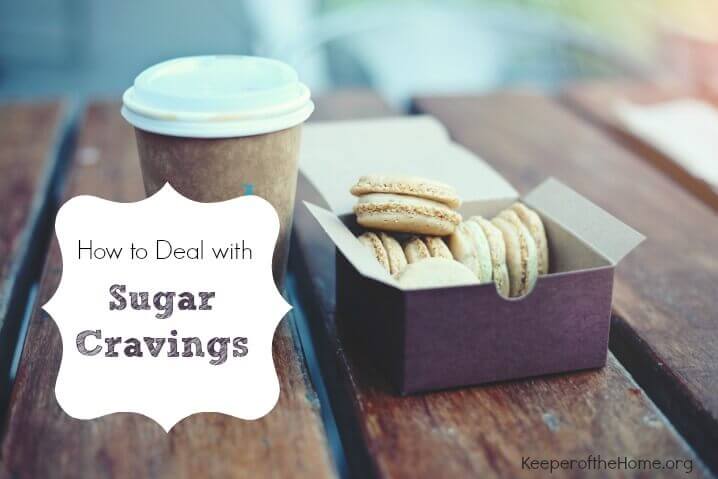
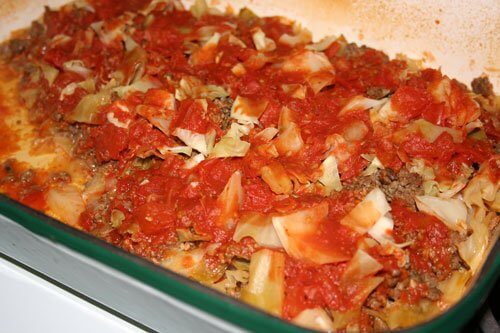
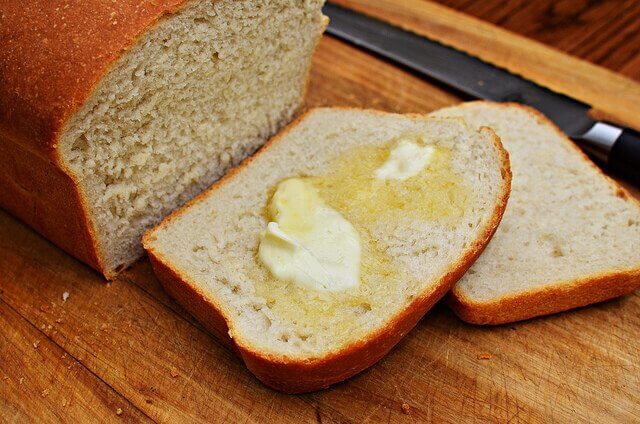
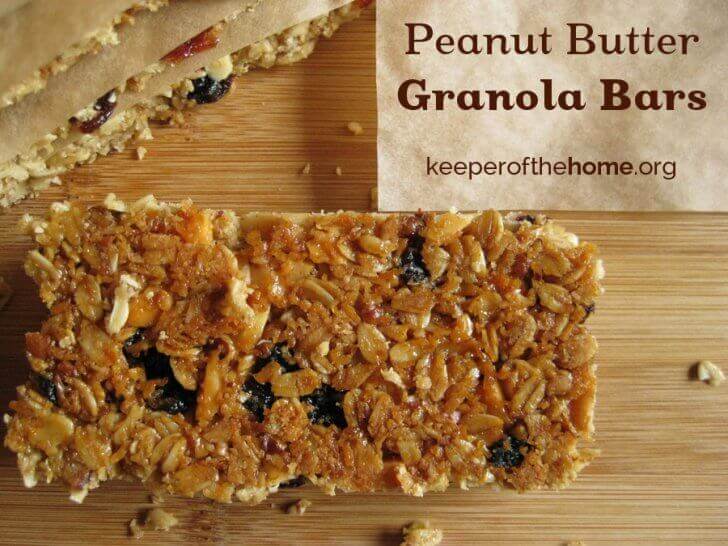
THANK YOU for this post!!
Thank you for this article. I have been mostly dariy free for a year milk deas bad things to me. I don’t like using rice milk but didn’t know what else to do. I am just starting to use coconut milk. I was woundering about non organic coconut milk I can’t find organic in my store,but the one I buy does not have anything but coconut,water,guar gum, what do you think?
Have you ever tried yogurt with coconut milk or rice milk? I have so many people ask about dairy free options for homemade yogurt, and I have no idea if they work!
🙂 Katie
@Katie @ Kitchen Stewardship, The closest I’ve come to homemade dairy-free yogurt is my coconut milk kefir, when it’s undiluted. When I make it with the Thai Kitchen Organic brand, it is so thick and creamy, especially after a little while in the fridge. The taste is different, of course, but the texture is very similar to good, thick yogurt and it has the beneficial bacteria to boot. I’ve been eating it with my homemade granola and I love it!
Those cheese crackers look amazing! I can’t wait to try them. I really like So Delicious unsweetened coconut milk. It’s a very drinkable, versatile milk beverage, and now that it comes in tetrapak cartons, it’s very convenient, too.
Your timing is perfect! Just yesterday, I started trying to find a cheese/cheese sauce substitute that we can eat at our house. My husband hasn’t eaten gluten, dairy, soy, eggs, etc. for about 8 months now. I’m ready for something cheesy tasting right about now so I’m looking forward to trying your ideas. Thanks so much for your great website!
Very interesting, thanks for sharing! I came across a recipe for “cheese” the other day…I’ll see if I can find it again and post it if I can…
I was wondering what your take is on using those tetra packs (for the possible leaching of something…don’t know what), and also on the lining of the coconut milk cans?
I’m excited to try making hemp milk. Not sure why I haven’t. I do like almond milk too…I make mine by soaking them, and then blending it with some good vanilla and a few dates. Then I use a nut milk bag (its amazing!!!) I was given it…I think its called Elaina Love’s amazing nut milk bag. I also recently read about making a combination of nuts/seeds for milk, or using sesame seeds or sunflower seeds or cashews. I love almond milk in smoothies.
@Nola, I’m not too concerned about the textra packs as far as what’s in them (but maybe I should be?), I just prefer to make my own fresh hemp milk, with the enzymes still in it, rather than buying the stuff that has been heated and stored for a long time. It’s more about the nutrients for me.
As for the coconut milk cans, that’s the one part I don’t love. I’m currently experimenting with coconut milk powder, but I still need to do more research on what the drying process does to the fats/protein in the coconut before I switch over to that instead. A reader did recommend a brand of organic coconut milk with no BPA in the lining (I believe it was Native Forest brand), but I’ve never seen that brand anywhere that I shop. For now, it’s a compromise for us, but hopefully being dairy-free is temporary. If it isn’t, I’ll have to really dig in and find some ideal long term solutions.
@Stephanie @ Keeper of the Home, I buy that brand (Native Forest) from Azure.
@lisa, Really? I’ve never noticed it before. I’ll have to look for it! Thanks!
@Stephanie @ Keeper of the Home, That makes sense about what you are doing about the coconut milk. Its simlar to the tomato paste thing around here (since I can’t handle coconut I don’t have the issue with that). I’d love to make my own tomato paste somehow…but for now I just limit it. Limiting less than ideal things is better than doing nothing. Have you found a solution for tomato paste? As far as the tetra pack thing…I was told by someone else its aluminum. But I don’t know for sure. However it is definafely overcooked and all that, plus the rice milk that I loved has tons of not so great oils. Making nut milk I find so easy anyways.
Could you explain more about why store-bought almond milk is not okay? I’ve recently been drinking it plain, and in my morning coffee (which I found added just enough sweetness so that I didn’t need any more sweetner). I was so pleased with my find, but now I’m wondering…
@Karen, There’s nothing wrong with almond milk in general. The main reason that I would avoid store-bought almond milk is because the nuts are not soaked beforehand. Nuts have enzyme inhibitors in them, which isn’t great for digestion and prevents the absorption of a lot of nutrients. Ideally, nuts should always be soaked at least overnight before using them. Also, when you make fresh almond milk, is has enzymes in it (different then the inhibitors- this is a good thing that enhances digestion), contains more nutrients because it is a fresher product. I don’t think store-bought almond milk is awful, I just don’t think it’s ideal, that’s all. 🙂
@Stephanie @ Keeper of the Home, Making almond milk is VERY easy (I find.) I use a nut milk bag (I think its called Elaina Love’s amazing nut milk bag) and I soak the almonds overnight, drain, then add the water and put them in my blender with a few dates and good vanilla (nope its not a professional blender) and then puree them. I then put it all in the nut milk bag, and get the “milk”. I use the pulp in baking to replace some of the flour. It takes about 2 minutes to set up at night to soak and about 3 minutes in the morning to make! Maybe you could try it.
@Nola, I have made almond milk before and I still do occasionally, but the truth is, we just don’t really love almond milk. I much prefer coconut milk or hemp milk!
I like all the alternatives you’ve mentioned. I also like the article you referenced on soy. I’ve been a vegetarian for most of my life (using a LOT of soy products with no ill effect) and have recently gone vegan (no dairy, eggs, meat). I’ve dabbled in veganism before, but didn’t get serious about it until I read “The China Study” by T. Colin Campbell which links dairy to activating cancer genes.
I think we need to be careful about generalizing that all soy is bad (as the article mentioned-unprocessed is probably fine) as anything processed is always going to have some negatives involved. No, I’m not a big eater/drinker of soy anymore because I try to avoid as much processed food as I can, but I DO know that there have been studies showing that a group of Christians (Seventh-day Adventists) are among the healthiest and longest living groups of people. I’m an SDA and I can tell you that generally, the diet does contain a lot of soy products, little (limited to only the “clean” meats as outlined in Leviticus 11) to ideally no meat products, lots of fruits and veggies. Of course, there is a lot of variation among different groups, but that is the typical diet.
Also, meat will inevitably have hormonal effects as well, something that you will not hear much about due to the thriving American meat industry. American meat is banned in Europe due to its processing methods (http://www.preventcancer.com/consumers/general/hormones_meat.htm). Of course, you can buy organic, but even still, it is a living mammal that inevitably has its own hormones which can not be avoided in its meat.
I’d highly recommend reading “The China Study.” It’s very eye-opening and full of scientific research.
Overall, I think that MODERATION is the key. Don’t overdo it with ANY food group. Our bodies were built for a variety of healthy foods.
Again, I really appreciate your article, very thought-provoking and obviously something I’m quite interested in studying. Keep them coming!
P.S. You’ve inspired me to start my own health blog…just started it this week so it’s a work in progress. HealthNutForLife.blogspot.com
.-= Angela´s last blog ..Natural Ant Trap =-.
Coconut milk was our go-to sub because we are/were dealing with nut and seed allergies, too. Although if you’re doing grains now, the sourdough crackers at Katie (Kitchen Stewardship)’s blog tasted sort of like cheez-its to us!
.-= Kate´s last blog ..How to Get Started Blogging =-.
@Kate, Oh, good to know! We’ll have to try them. Although we are gluten-free right now, too, at least for our little man. We saw an obvious difference in him with the removal of gluten/dairy and whenever we try to add it back in. The rest of us are on other grains, though, although it’s often easier to just bake gluten-free.
Hi! Thank you for this post. We are dairy free and I wanted to try the coconut keifer. My question is, where do you get your coconut keifer grains from to start?
thanks!
Kelly
@Kelly, I am using dairy kefir grains that I got from a friend. You could use any dairy kefir grains. A great place to find them is Cultures for Health.
@Stephanie @ Keeper of the Home, Thank you! Would the coconut keifer be “safe” for someone who is lactose intolerant? (my 10 month old, who is on antibiotics).
@Kelly, Yes, it doesn’t have any lactose. As long as your baby isn’t sensitive to coconut, it should be just fine.
Thanks for this post- I have an intolerance to cow dairy products [goat and sheep are fine as well as dairy free subsitutes] and can get discouraging to read many wonderful posts [not just you] about raw milk and wonderful recipes that includes cheese.
I am also expecting my third child in 3 weeks and been wondering about what to do for her when pediatricians recommend whole milk due to fat content and other factors but if she doesn’t get any cow milk through me breastfeeding her, I just wonder if she’ll transition well or what could I do instead?
I was surprised you liked hemp milk. I bought some “Hemp Dream” (made by the same co. that does Rice Dream, Soy Dream, etc) and it was horrible! :p I managed to use it in baking (I bought several boxes at a grocery outlet store- such a deal- ha!)
.-= lisa´s last blog ..Tortilla Beef Skillet =-.
When I was in high school, I discovered that I had a dairy allergy that was making me quite sick. Since then, my diet has been dairy free. There are so many alternatives, it’s amazing. There is rarely a recipe that I find that can’t be made dairy free with a few little tweaks. (Although I have to admit, some take a little more creativity than others.)
I’d love to share some recipes, but am not really sure where to start – it depends on what you might need an alternative of.
I love your blog and all of the helpful information. I was inspired to make Coconut Milk Kefir based on your site! Unfortunately I don’t think mine turned out the way it is supposed to. I let it sit on the counter for 48 hrs the 1st time, 24 hrs the 2nd time and both batches were VERY yeasty. Is it possible it may not need to ferment as long? Or is there something about coconut milk that requires a longer ferment? Any tips you can share? Thanks so much in advance. Your blog is the only one I actively look for new updates. Keep up the great work!!
@Sonya, I often find that mine is ready even before the 24 hours, sometimes in as little as 12. It often ends up being 24 just because i get busy and forget about it! 🙂 I’m not sure the science/reason behind it, but it doesn’t seem to need too long to ferment. So glad you’re enjoying the site!